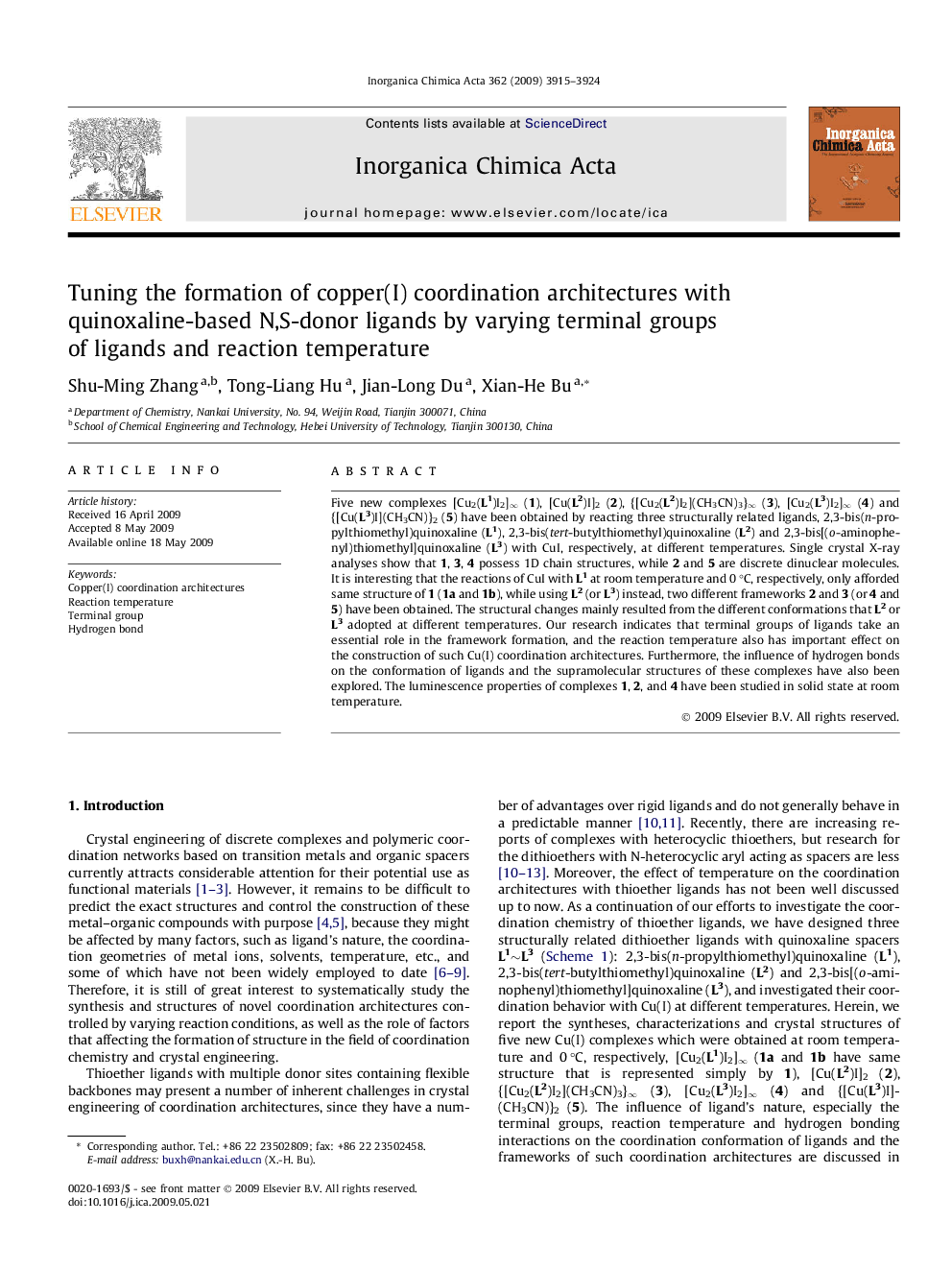| کد مقاله | کد نشریه | سال انتشار | مقاله انگلیسی | نسخه تمام متن |
|---|---|---|---|---|
| 1308291 | 975169 | 2009 | 10 صفحه PDF | دانلود رایگان |

Five new complexes [Cu2(L1)I2]∞ (1), [Cu(L2)I]2 (2), {[Cu2(L2)I2](CH3CN)3}∞ (3), [Cu2(L3)I2]∞ (4) and {[Cu(L3)I](CH3CN)}2 (5) have been obtained by reacting three structurally related ligands, 2,3-bis(n-propylthiomethyl)quinoxaline (L1), 2,3-bis(tert-butylthiomethyl)quinoxaline (L2) and 2,3-bis[(o-aminophenyl)thiomethyl]quinoxaline (L3) with CuI, respectively, at different temperatures. Single crystal X-ray analyses show that 1, 3, 4 possess 1D chain structures, while 2 and 5 are discrete dinuclear molecules. It is interesting that the reactions of CuI with L1 at room temperature and 0 °C, respectively, only afforded same structure of 1 (1a and 1b), while using L2 (or L3) instead, two different frameworks 2 and 3 (or 4 and 5) have been obtained. The structural changes mainly resulted from the different conformations that L2 or L3 adopted at different temperatures. Our research indicates that terminal groups of ligands take an essential role in the framework formation, and the reaction temperature also has important effect on the construction of such Cu(I) coordination architectures. Furthermore, the influence of hydrogen bonds on the conformation of ligands and the supramolecular structures of these complexes have also been explored. The luminescence properties of complexes 1, 2, and 4 have been studied in solid state at room temperature.
Five new copper(I) complexes with three structurally related N,S-donor ligands have been synthesized and characterized. There are interesting structural changes in these compounds result from different conformations preferred by the ligands at different temperatures. The coordination feature of ligands and reaction temperature are confirmed having great effects on the formation of such copper(I) coordination architectures.Figure optionsDownload as PowerPoint slide
Journal: Inorganica Chimica Acta - Volume 362, Issue 11, 15 August 2009, Pages 3915–3924